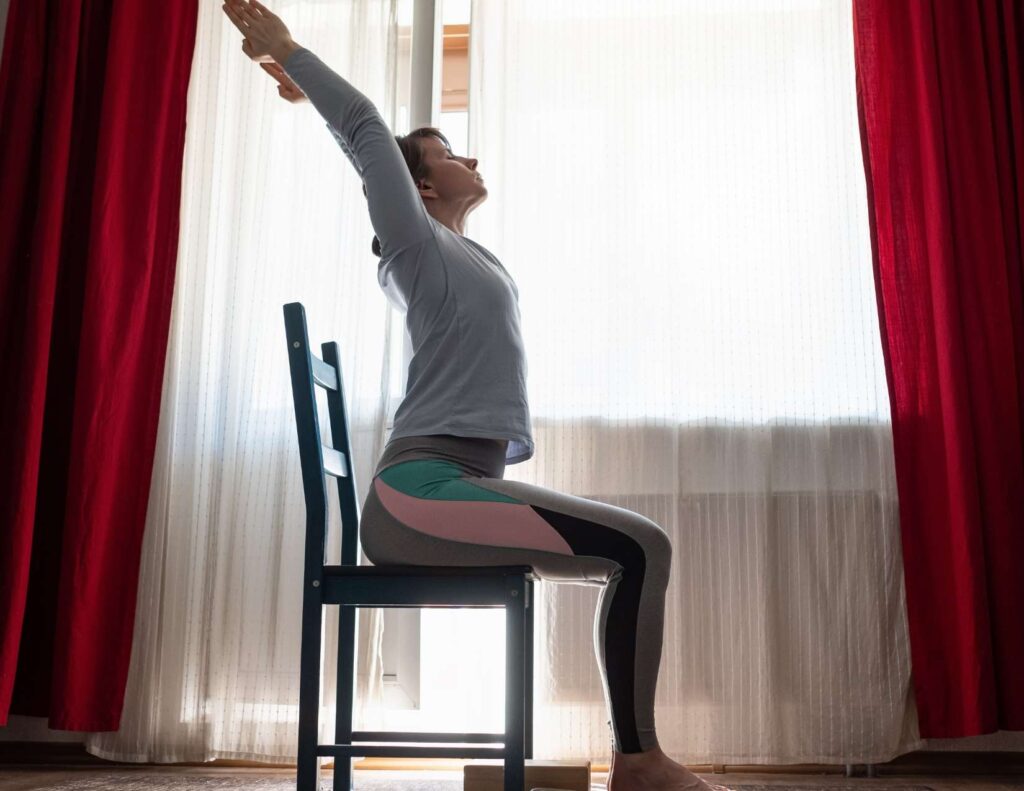How To Find The Best Sitting Position For Sciatica
As someone who has struggled with sciatica pain, I know firsthand how challenging it can be to find a comfortable sitting position. Sciatica, which is characterized by pain that radiates from the lower back down the leg and can be aggravated by sitting for long periods of time. In this article, I will share some tips for finding the best sitting position for sciatica and managing the pain that comes with it.

Table of Contents
Understanding Sciatica and Its Causes
Before we dive into the best sitting position for sciatica, it’s important to understand what causes this condition. Sciatica is typically caused by a herniated or bulging disc in the lower back, which puts pressure on the sciatic nerve. This nerve runs from the lower back down the back of each leg, and when it becomes compressed or irritated, it can cause pain, numbness, and tingling.
Sitting for long periods of time can exacerbate sciatica symptoms because it puts pressure on the lower back and can compress the sciatic nerve. Poor posture, such as slouching or leaning to one side, can also contribute to sciatica pain.
The Importance of Proper Sitting Position for Sciatica
Finding the best sitting position for sciatica is crucial for managing the pain. When you sit in a way that supports your lower back and relieves pressure on the sciatic nerve, you can reduce your pain and even get immediate relief from sciatica pain.
A good sitting position for sciatica involves sitting up straight with your feet flat on the floor. Your hips should be level with or slightly higher than your knees, and your lower back should be supported by the back of your chair. Avoid crossing your legs or leaning to one side, as this can put additional pressure on your lower back and aggravate your sciatica pain.

Factors to Consider When Choosing a Chair
When looking for a chair that will support a good sitting position for sciatica, there are several factors to consider. First, look for a chair with good lumbar support. This means that the back of the chair should curve inwards to support the natural curve of your lower back.
Next, consider the height of the chair. Your feet should be flat on the floor, so make sure the chair is the right height for your desk or work surface. If the chair is too high, you may need to use a footrest to keep your feet flat on the floor.
Finally, look for a chair with adjustable features. The ability to adjust the height, tilt, and armrests of your chair can help you find your best sitting position for sciatica.
Tips for Finding the Best Sitting Position for Sciatica
Now that you know what to look for in a chair, let’s discuss some tips for finding the best sitting position for sciatica.
- Start by sitting up straight with your back against the back of your chair.
- Place your feet flat on the floor and make sure your hips are level with or slightly higher than your knees.
- If necessary, use a cushion or rolled-up towel to support your lower back and maintain the natural curve of your spine.
- Avoid crossing your legs or sitting with your legs straight out in front of you, as this can put additional pressure on your lower back.
- Instead, keep your knees bent at a 90-degree angle and your feet flat on the floor.
- If you need to reach something, use your entire body to turn rather than twisting at the waist.
- If you work at a desk, make sure your computer screen is at eye level to avoid straining your neck.
It’s important to take frequent breaks and stand up, stretch, and walk around every 30 minutes to an hour. This can help relieve pressure on your lower back and prevent your pain from worsening into the last stages of sciatica.
The best way to sit with sciatica is:
To avoid sitting for extended periods of time. Instead, take frequent breaks and use a pillow or cushion to support your lower back. Stretching regularly can also help relieve pain and reduce inflammation. When you do sit, make sure you keep your back straight and use a chair with good lumbar support. Additionally, ensure that your legs are slightly elevated off the floor.

Exercises to Help Relieve Sciatica Pain While Sitting
In addition to finding the best sitting position for sciatica, there are several exercises and stretches you can do to help relieve your pain while sitting.
- Pelvic tilt: Sit up straight with your feet flat on the floor. Tighten your stomach muscles and tilt your pelvis forward, then backwards. Repeat 10 times.
- Knee-to-chest stretch: Sit up straight with your feet flat on the floor. Lift one knee towards your chest and hold it with both hands for 30 seconds. Repeat on the other side.
- Seated spinal twist: Sit up straight with your feet flat on the floor. Twist your upper body to one side, placing your opposite hand on the outside of your thigh for support. Hold for 30 seconds and repeat on the other side.
- Hamstring stretch: Sit up straight with your feet flat on the floor. Extend one leg straight out in front of you and bend the other knee. Reach towards your toes and hold for 30 seconds. Repeat on the other side.
These exercises can help stretch and strengthen the muscles in your lower back and legs, reducing pressure on the sciatic nerve. And, be sure to avoid these exercises with sciatica!

How to Prevent Sciatica Pain When Sitting
In addition to finding the best sitting position for sciatica and doing exercises, there are several other ways to manage sciatica pain while sitting.
- Use heat or ice: Applying heat or ice to your lower back can help reduce inflammation and relieve pain. Use a heating pad or ice pack for 20 minutes at a time, several times a day.
- Take breaks: As mentioned earlier, it’s important to take frequent breaks and stand up, stretch, and walk around every 30 minutes to an hour.
- Use a standing desk: If possible, consider using a standing desk to reduce the amount of time you spend sitting.
- Wear comfortable shoes: Wearing shoes with good arch support can help reduce pressure on your lower back and legs.
- Use a supportive cushion: Using a cushion when sitting for longer periods is a must. It greatly reduces the pressure off of the low back and sciatic nerve.
How to sit on couch with sciatica
If you are suffering from sciatica, sitting on a couch can be difficult and cause pain. To make it more comfortable, start by positioning yourself with your hips slightly higher than your knees. You can do this by using either pillows or cushions to prop up your hips. Make sure to keep your spine in a neutral position throughout, and avoid hunching over or leaning too far back in your seat. Additionally, try to switch positions often when sitting on the couch so you don’t stay in one position for too long. Finally, make sure to get up and move around frequently throughout the day to help keep your sciatica symptoms at bay!
How to sit in bed with sciatica
It’s important to pay attention to how you are sitting in bed. When lying down, make sure your lower back is supported by a pillow and that your legs remain elevated on the mattress. This will help reduce pressure on your lower back and keep your spine aligned. It may also help to place a pillow between your knees while on your side.
Additionally, try to avoid activities that require you to stay in one position for too long such as reading or working on a laptop. It’s better to take frequent breaks and stretch your legs in order to release tension from your lower back. Finally, make sure the mattress you are sleeping on is supportive and comfortable. If it is too soft or too hard it can exacerbate sciatic nerve pain. Keeping these tips in mind can help reduce discomfort caused by sciatica while lying down or sitting in bed.
How to Adjust Your Work Environment for a Better Sitting Position
If you work in an office, it’s important to make sure your work environment is set up in a way that supports the best sitting position for sciatica.
- Adjust your chair: Make sure your chair is the right height for your desk or work surface. Your feet should be flat on the floor and your hips should be level with or slightly higher than your knees.
- Use a footrest: If your chair is too high, use a footrest to keep your feet flat on the floor.
- Adjust your computer screen: Make sure your computer screen is at eye level to avoid straining your neck. You can stack books or magazines underneath to find the perfect height.
- Use a lumbar support cushion: If your chair doesn’t provide enough lumbar support, use a cushion or rolled-up towel to support your lower back.

Alternative Seating Options for Sciatica
If you have trouble finding a comfortable sitting position in a traditional chair, there are several alternative seating options that may help relieve your sciatica pain.
- Exercise ball: Sitting on an exercise ball can help improve your posture and strengthen your core muscles.
- Kneeling chair: A kneeling chair can help shift your weight forward and reduce pressure on your lower back.
- Reclining chair: A reclining chair can help distribute your weight evenly and reduce pressure on your lower back.
When to Seek Medical Attention for Sciatica
If your sciatica pain persists despite your efforts to manage it, or if you experience loss of bladder or bowel control, seek medical attention immediately. These symptoms could indicate a serious underlying condition that requires prompt treatment.
Conclusion
Finding the best sitting position for sciatica pain can be a challenge, but with the right chair, cushion, posture, and exercises, you can manage your pain and prevent further irritation. Remember to take frequent breaks and stand up, stretch, and walk around every 30 minutes to an hour, and consider alternative seating options if traditional chairs don’t work for you!







